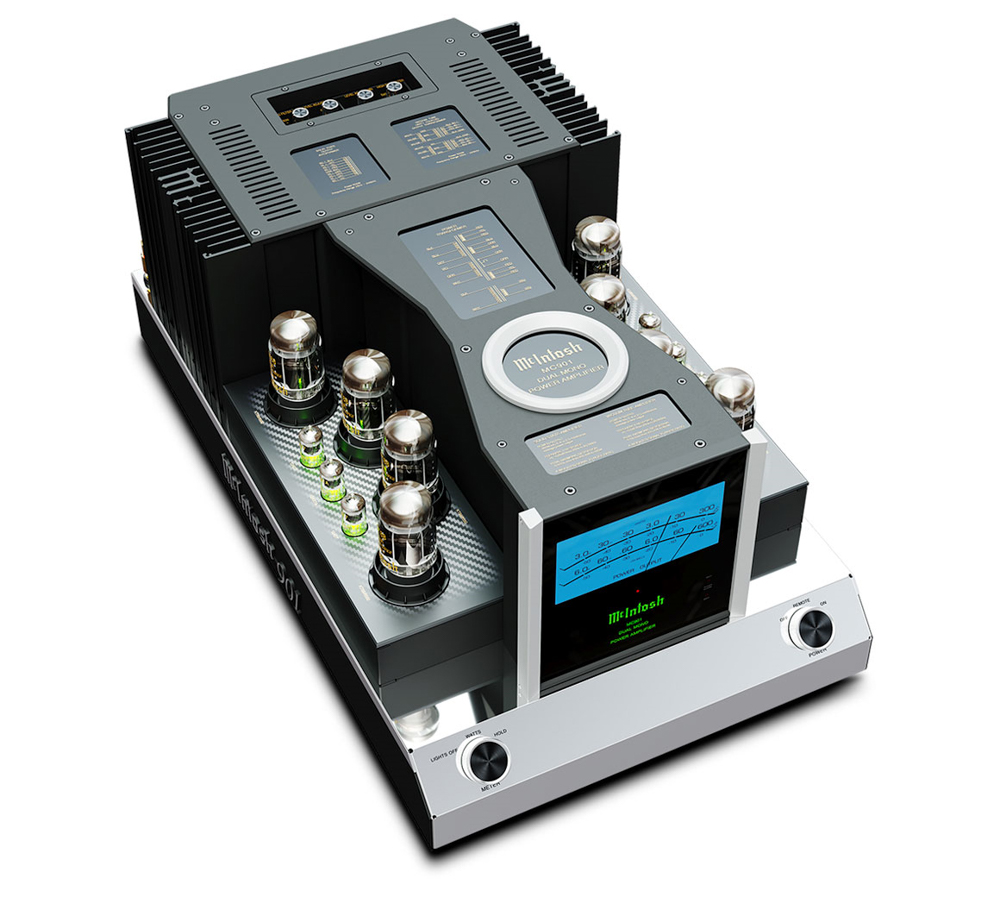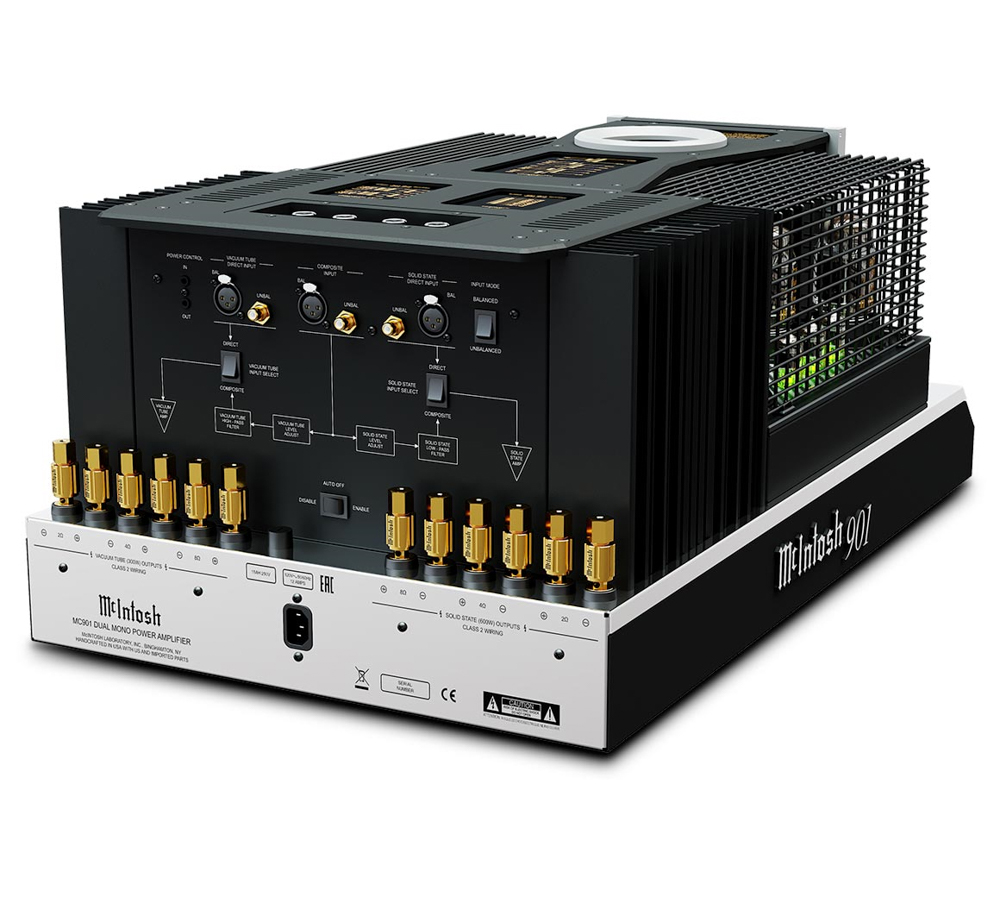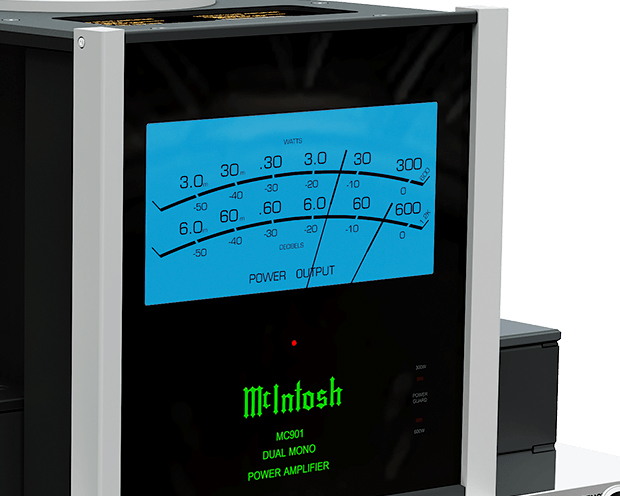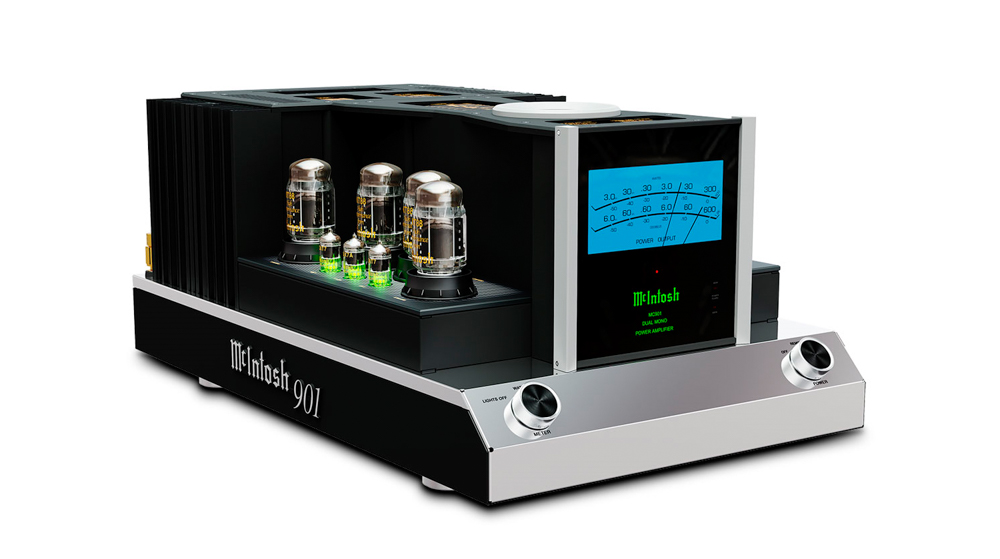MC901 - McIntosh is breaking new ground Featured
Written by Karl Erik SyltheEveryone knows that one monoblock is not sufficient for biamping a speaker. Now is the time to reassess this logical fact
A few weeks ago, McIntosh launched a unique innovative monoblock. That is - it may be debated whether it is really a monoblock, since it has two Power stages, but it is not an ordinary stereo power amplifier, because it can hardly be used sensibly as a stereo amplifier. For that purpose, it is too unsymmetrical.
MC901
 But what is the MC901 really like? It is a monoblock that has two very different Power stages and is specially designed for biamping a speaker. Or rather two, if you buy a pair.
But what is the MC901 really like? It is a monoblock that has two very different Power stages and is specially designed for biamping a speaker. Or rather two, if you buy a pair.
The amplifier has a tube-based power stage that delivers 300 watts in 2/4/8 ohms. This power stage is intended to operate the treble and midrange of a speaker. In this power stage there are four 12AT7 tubes and two 12AX7A. And in addition, this stage has 8 pcs. KT88 output tube.
The power stage that is intended to operate the bass is a pure transistor amplifier that delivers 600 watts in 2/4/8 ohms. Here McIntosh has deliberately chosen the best of both camps, with a midrange treble tube amplifier, and bass transistor amplifier. This is a well-known philosophy for biamping, as tube amplifiers may not be the ideal choice in demanding setups.
Crossover filters
In front of both amplifier stages is a set of filters with adjustable crossover frequency between 100 Hz and 1kHz. There is also a gain controller for each stage that can trim from -6dB to + 3dB to be able to adjust the level to the speakers in question.

Inputs
There are three different inputs on this power amplifier, and these again have the option between balanced and RCA. In addition to a direct input to each stage that goes beyond cross-filters, there is a third input that McIntosh has called "Composite". The signal transmitted via this input passes through the respective HighPass and LowPass filters, and is thus distributed to both power stages.
Speaker terminals
There are three sets of speaker terminals on the amplifier. One for 2 ohm, one for 4 ohm and one for 8 ohm. Here you have to choose the one that fits, and when biamping it is important to note that the impedance of each part is not the same as the total impedance.
Active or passive biamping?
So we have come to the interesting question - should the amplifier be used for passive or active biamping? Or maybe something in between?
If we start with passive biamping , we have a clear situation. Then you use the terminals that lead directly to each power stage without going through crossovers.
With traditional active biamping , the passive pass filters in the speaker are bypassed. If external active filters have been fitted to the current model, such as that Linn and some other speaker manufacturers have made for some of their speakers, these crossovers may be inserted in front of the MC901 in the signal chain, and it is still relevant to use the direct inputs on the MC901.
If you are going to use the Composite input and thus activate the crossover filters in the MC901, it is a matter of whether McIntosh envisages disconnecting the passive crossover filters in the speakers, or whether they recommend using both active and passive crossover filters. McIntosh does not say anything about this topic, and it is obvious to assume that the MC901 crossover filter does not have sufficient parameters to allow it to be adequately adapted to some speaker designs.
On the other hand, if the crossover filters in MC910 are used in addition to the passive crossovers in addition to the crossovers in MC901, there will be a hybrid biamping . In such a situation, it may be convenient to set the crossover frequency slightly on the outside of the passive frequency to ensure there is not a double roll-off in the working area of the respective speakers.
The Beast
 The amplifier MC901 has a weight of 80 kg. And even though in some of the pictures it may fool you into thinking this is a cozy little half-width component, there is reason to clear space in the living room. For here we are talking full width, and a depth of 75cm.
The amplifier MC901 has a weight of 80 kg. And even though in some of the pictures it may fool you into thinking this is a cozy little half-width component, there is reason to clear space in the living room. For here we are talking full width, and a depth of 75cm.
Of course, McIntosh's iconic blue watt meters are also present for this donation. And this time in a special version for simultaneous display in both the 300w and 600w power stage.
The price is USD 17.500 for each.
Read more about MC901 at McIntosh

Karl Erik Sylthe
Redaktør i Audiophile.no
This email address is being protected from spambots. You need JavaScript enabled to view it.Latest from Karl Erik Sylthe
- Rega Mercury og Solis – HighEnd forsterkersett med britisk tradisjon
- Bowers & Wilkins og McLaren utvider partnerskapet med den nye Px8 S2 McLaren Edition
- TEST: Pixel 10 Pro XL – Googles flaggskip i KI-ens tidsalder
- TEST: Cyrus 40 – elegant og kompakt HiFi i forsiktig HighEnd-terreng
- PLATESMAKING 24 - 2025. Nye- og gamle helter
- KLH Audio med ny distributør i Norge – med tre nye høyttalermodeller
- Lumin X2 – nytt flaggskip med egenutviklet DAC-teknologi
- TEST: Sennheiser Momentum 4 - høy kvalitet til en svært moderat pris
- TEST: JBL Tour One M3 – et friskt pust
- TEST: Sonos Ace - gigant i ukjent terreng?
- TEST: Sennheiser HDB 630 – en fullblods 600er?
- TEST: B&W Px8 S2 – en velkledd audiofil mester
- GRUPPETEST: Fem trådløse hodetelefoner i Premium-segmentet
- PLATESMAKING 22-2025. Fire gamle helter og en nykommer
- Linn introduserer ny versjon av Klimax Exaktbox
- Technics SL-1200G Master Edition - en verdig avskjed med en legende?
- Sound of Heaven og Hifisentralen med minimesse i Drammen
- PLATESMAKING: Little Feat - The Last Record Album (Deluxe Edition). Som å hoppe etter Colombus
- TEST; Atohm Sirocco 1.24 – en velkledd fransk sjarmør
- TEST: Eversolo Play - strømmefavoritten som utvidet repertoaret


